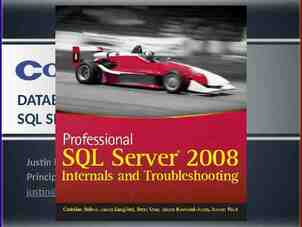SAFE + SOUND WEEK AUGUST 10-16, 2020 Bill de Blasio Mayor Lorraine
46 Slides3.42 MB
SAFE SOUND WEEK AUGUST 10-16, 2020 Bill de Blasio Mayor Lorraine Grillo Commissioner
SAFE SOUND WEEK is a nationwide event created to raise awareness and understanding of the value of safety and health programs in workplaces. WHY PARTICIPATE? Each August, we invite you to share in DDC’s safety success! In addition, during the week, various topics will be provided on the importance of recognizing and correcting safety hazards before they cause injury or illness. 2
WORKPLACE SAFETY is very important for each and every employee in the industry because all workers desire to work in a safe and protected environment. Each and every person who leaves home for work should return home safe and sound. WHY WORK SAFELY? Prevent work place injuries, illnesses, and fatalities Prevent hardships affecting workers, families, employers To ensure that everyone returns home in the same condition they left – safe and sound 3
STEPS TO ENSURE WORKPLACE SAFETY Safety culture supported by all - Top Down - Management to Workers Comprehensive Site Safety Plan - in place and implemented Ensure workers are well trained Provide task appropriate PPE - used as required Provide task appropriate tools - used correctly and maintained Schedule regular meetings on workplace safety Maintain a clean worksite - good housekeeping Encourage an open dialogue 4
YEAR IN REVIEW Milestones Site Safety Plan Application - developed and lunched Stop Work Order Process - implemented Safety Deviations Correction Process – improved Number of Accidents and Incidents - decreased In Progress Mobile Auditing App - in progress Section U & EP7 Projects – Collaboration with utility companies 5
SITE SAFETY PLAN APPLICATION (SSP APP) SSP APP developed in early 2019 and launched August 16, 2019 Streamlined SSP preparation, submittal and review process SSP APP training provided to both contractors and Project Staff Contractor, Project Staff and the Office of Construction Safety play a role in SSP submittal and review process Communication with Project Staff and Contractor through APP Easily accessed through https://ddcanywhere.nyc or Benchmark Support provided by the Office of Construction Safety and ITS 6
SITE SAFETY PLAN APPLICATION (SSP APP) 7
SITE SAFETY PLAN APPLICATION (SSP APP) 8
STOP WORK ORDER (SWO) In an effort to improve safety and prevent a potential incident or accident, the Office of Construction Safety developed and implemented the SWO process in the 4th quarter of 2019. A SWO maybe issued when a task is performed in an unsafe manner, for example working in a confined space, working in a trench without an approved or no protective system, working without an acceptable fall protection system. The SWO affects specific task observed – other activities may continue provided they are in compliance. A SWO is lifted when permanent corrective action is taken to address the unsafe condition and documented confirmation is provided. 9
SAFETY DEVIATIONS CORRECTION PROCESS In a collaborative effort between the Office of Construction Safety and the Public Buildings and Infrastructure Divisions, the number of unresolved safety deviations has been reduced to single digits by: Having contractors immediately address deviations identified during quality and safety audits Project Staff ensuring that unresolved deviations are quickly corrected and confirmation provided Following-up with Project Staff to ensure and confirm deviations are expeditiously addressed Providing support to Project Staff in efforts to address any quality or safety concerns 10
REDUCTION IN ACCIDENTS & INCIDENTS Accidents - Incidents 300 276 250 234 200 161 169 150 100 73 41 50 23 0 16 -0.31 Accidents 1 0 Fatalities 2 -0.44 Incidents - Injury Incidents - Property Damage 11 6 Near Miss 1 -0.91 Public 5 1 -0.8 Other -0.16 Total -50 Aug 18' - July 19' Aug 19' - July 20' % Change 11
MOBILE AUDITNG APP The Offices of Quality Assurance and Construction Safety, along with ITS, are working to develop a mobile auditing application which will: Streamline the scheduling and improve efficiency of quality and safety audits Allow real-time documentation of audit results Immediately distribute signed electronic exit conference and audit reports to Project Staff Improved efficiency will provide auditors more time in field to identify hazards thus improving safety 12
SECTION U AND EP-7 PROJECTS The Office of Construction Safety, in collaboration with utility operators, are developing safety guidelines: For the safe removal of abandoned utilities That provide clear documented instructions on the removal of abandoned facilities Identifying task appropriate PPE when working in proximity of certain facilities – natural gas or electric 13
SAFETY RELATED TOPICS While workers at DDC projects may be exposed to a number of safety hazards, the following topics have been identified as current front runners: Damage Prevention Excavation Falls Heat Stress COVID-19 14
DAMAGE PREVENTION Ensure contractor has notified the One Call Center Positive response by utility operator prior to the start of excavation Visual confirmation utilities have been marked Within the tolerance zone, contractor/excavator shall verify the precise location, type, size, direction of run and depth of such underground facility or its encasement by means of hand excavation All overhead utilities that maybe impacted should be identified, and a spotter provided to alert and guide excavator operator Precaution must be taken to protect exposed and visible utilities within an excavation 15
EXCAVATION AND TRENCHING Risks vs potential hazards: Damage to utilities - Fires, Explosion, Electrocution, Chemical exposure Trench collapse or engulfment - Cave in, Falling objects No means of egress - Entrapment, Engulfment Working near mechanized equipment or suspended loads - Struck by, Caught in/between, Noise, Vibration O2, H2S, CH4, CO, NO2 - Exposure to hazardous atmospheres Water accumulation - Drowning, Cave in (weakened excavation stability) Instability of adjacent structures - Structure collapse, Cave in, Struck by 16
EXCAVATION AND TRENCHING Control Measures: Assess the work zone and plan your work prior to entry Call before you dig as per Code 753 Notify NYC DOB when applicable Inspect the trench and test its atmosphere prior to entry Provide proper and sufficient means of ingress/egress when required Protect excavation with sloping, benching or protective system when required Maintain all spoils, equipment and materials more than 2 feet from the trench edges 17
WORKING SAFELY AT HEIGHTS PLAN your job beforehand and develop a fall protection plan ENSURE the correct fall protective system is in place TRAIN employees on proper and safe use of fall protective system Frequently used fall protection systems: Guardrails Safety nets Personal fall arrest system (PFAS) 18
HEAT STRESS Employees performing work in hot environments or exposed to high humidity and extreme heat during summer months may be at risk. Ensure potable water is accessible in the work area Alternate employees or restrict volume of activities with potential of exposure Establish rest areas and rest periods in a cool shady places Train supervisors and employees to detect early stages and act proactively Call 911 for professional medical assistance, if signs of heat stroke are identified 19
COVID19 C O M M I T M E N T TO S A F E T Y 20
On March 11, 2020, the World Health Organization declared COVID-19 a pandemic. During the coronavirus pandemic, DDC is focusing on protecting the safety and health of DDC/CM/REI employees and construction workers. 21
What steps were taken? DDC COVID-19 Safety Protocol for Construction Sites and Safety Checklists were developed and implemented COVID-19 related items were added to DDC Office of Construction Safety Checklist Verification of COVID-19 Safety Compliance during safety audits 22
CONTENTS General Safety Policies and Procedures Access to Construction Sites Personal Protective Equipment (PPE) and COVID-19 Personal Protection Jobsite Cleaning and Disinfecting 23
GENERAL SAFETY POLICIES AND RULES CORONAVIRUS PROTECTION General Requirements Social Distancing Avoid Keep Clean Disinfectant Symptoms Aware Work Practices and Hygiene 24
General Requirements PROJECT SPECIFIC COVID-19 SAFETY PLAN Developed and implemented by Contractors based on COVID-19 Exposure Risk Levels Incompliance with all applicable COVID-19 federal, state and local requirements, guidelines and recommendations Periodically reviewed and, if necessary, revised to: Ensure feasibility to the jobsite operations Stay up to date with any changes to COVID-19 requirements 25
General Requirements PROJECT SPECIFIC COVID-19 SAFETY PLAN 26
General Requirements COVID-19 EXPOSURE RISK EVALUATION Contractors will be required to: Prepare a COVID-19 Communication Plan Maintain a Daily Log of workers and visitors Assess hazards and select, implement, and ensure controls to prevent exposure. The assessment results shall be captured in the Project Specific Job Hazard Analysis form Designate a COVID-19 Site Safety Monitor 27
General Requirements DDC COVID-19 SAFETY CHECKLIST – CONSTRUCTION SITES Completed daily by DDC/CM/REI project personnel prior to each shift A copy of the completed checklist shall be available for review at the jobsite 28
General Requirements SAFETY MEETINGS (DAILY, WEEKLY AND OTHER) Will include: COVID-19 recommended practices for construction jobsites Project specific sanitation, hygiene and cleaning procedures COVID-19 Personal Protection requirements Designated person may sign-in each attendee COVID-19 safety measures (social distancing, face covering) will be followed 29
General Requirements ADDITIONAL REQUIREMENTS All personnel (contractors, subcontractors, project personnel, visitors) shall be trained on applicable project specific COVID-19 safety procedures. If a worker tests positive for COVID-19, employer must immediately notify state and local health departments and cooperate with contact tracing efforts, while maintaining confidentiality required by state and federal law and regulations The exchange/sharing of paper documents will be limited and the use of electronic communication will be encouraged, whenever possible. 30
General Requirements SOCIAL DISTANCING Minimize interactions and maintain social distancing (min. 6 feet): Between workers at all times, except as strictly necessary to carry out a task associated with the project All site visitors Between workers and the general In trailers/field offices, confined spaces, “choke points”, elevators. Discourage hand-shaking and other contact greetings. 31
General Requirements SOCIAL DISTANCING Stagger Procedures to reduce the size of any group of workers at any one time: Stagger stop and start-times of shift schedule Stagger trade-specific work Stagger breaks and lunches Minimize ride-sharing. While in a vehicle, employees must ensure adequate ventilation and use of face coverings. Prohibit gatherings of any size on the jobsite, except for safety meetings or as strictly necessary to carry out a task associated with the project. 32
General Requirements WORK PRACTICIES AND HYGIENE Compliance with OSHA standard 29 CFR 1926.51 “Sanitation” and COVID-19 guidelines: Individual water bottles instead of a common source of drinking water Adequate number of toilets Hand soap or similar cleansing agents, such as hand sanitizers Minimize or prohibit shared use of: Personal Protective Equipment COVID-19 Personal Protection Devices, Tools and Equipment* *Note: If tools must be shared, alcohol-based wipes or other methods will be used to clean tools before and after use. When cleaning tools and equipment, follow manufacturer recommendations. 33
General Requirements REFERENCES DOB’s Industry Best Practices for Physical Distancing Guidelines for Construction Sites PHASE 1: NYC Construction Restart NYC Buildings 2020-010 Bulletin - Reopening of Sites New York State Construction Guidelines for Employers and Employees NYS Interim Guidance for Construction Activities During The COVID-19 Public Health Em ergency NY Forward Safety Plan Template OSHA Guidance on Preparing Workplaces for COVID-19 OSHA COVID-19 – Control and Prevention/Construction Work Guidance 34
ACCESS TO CONSTRUCTION SITES Workers and Project Personnel Visitors 35
DO NOT ENTER the jobsite if you have a fever, cough, or other COVID-19 symptoms. If you feel sick, or have been exposed to anyone who is sick, stay at home. 36
Access to Construction Sites COVID-19 Screening Assessment - questionnaire at a minimum Compliance with NYS Construction Guidelines for Employers and Employees Performed prior to entry into worksites Site access may be restricted, based on screening results Applicable to contractors, DDC/CM/REI projects staff and all visitors Project specific COVID-19 Safety Plan to be followed by all workers, project personnel, and visitors. 37
Access to Construction Sites Site deliveries will be permitted but should be properly coordinated to eliminate or minimize personal contact. Delivery personnel should remain in their vehicles, if possible. At jobsite entry, exit points, and/or in an area visible to workers and visitors: Provide wash stations or hand sanitizer stations Place COVID-19 posters/signs 38
PERSONAL PROTECTIVE EQUIPMENT (PPE) AND COVID-19 PERSONAL PROTECTION 39
Personal Protective Equipment (PPE) and COVID-19 Personal Protection Minimum PPE: Hard hat, safety glasses, and safety shoes Task Specific PPE: Fall protection, hearing protection, respirators, safety vest, gloves, etc. COVID-19 Personal Protection: Face masks and face coverings Latex Gloves 40
Personal Protective Equipment (PPE) and COVID-19 Personal Protection The use of task specific PPE (i.e. respirator, specific glove type) takes precedence over the use of COVID-19 related Personal Protection (face masks/coverings, latex gloves) PPE and COVID-19 Personal Protection shall NEVER be shared Reusable PPE shall be properly cleaned and sanitized Employers (Contractors/CM/REI) shall ensure sufficient COVID-19 Personal Protection supplies at the jobsite 41
JOBSITE CLEANING AND DISINFECTING 42
Jobsite Cleaning and Disinfecting Frequent All high-traffic and high-touch areas/surfaces In accordance with CDC guidelines CDC recommended EPA-registered disinfectant(s) Maintain a Cleaning and Disinfection Log Note: Safety Data Sheets of all disinfectants used on site will be kept on site and available for review upon request 43
Jobsite Cleaning and Disinfecting Regular housekeeping practices: Portable jobsite toilets to be cleaned and disinfected on the inside Hand sanitizer dispensers are available and always filled Vehicles interior and equipment/tools to be cleaned: o at least once per day o before change in operator or rider 44
THINK SAFETY Practice Social Distancing Protects You and Those Around You 45
Questions and Answers 46



















































